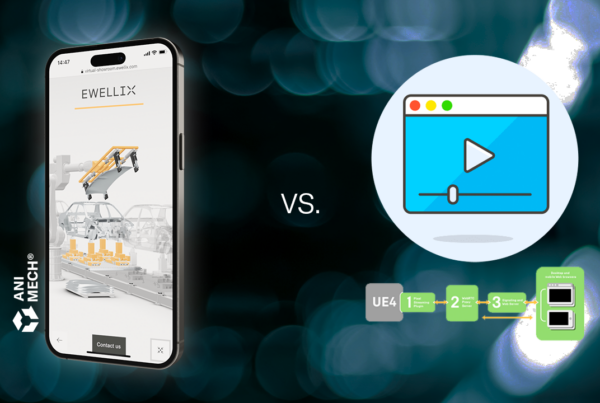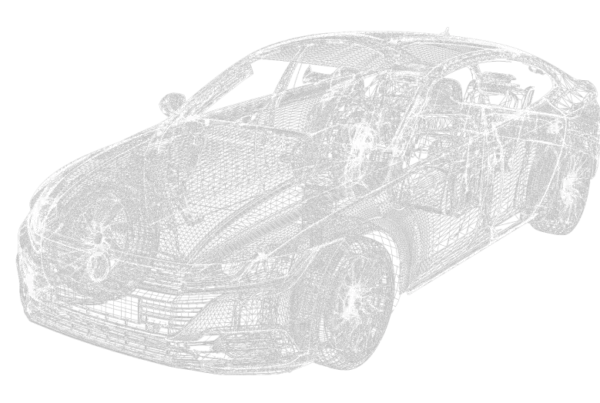3D renderings have revolutionized the way we approach product design, marketing, interior and exterior design. The most common marketing methods included taking actual photographs and videos of a product to produce in real time. Since then, the digital revolution has started, bringing fierce competition to this type of advertising. 3D technology allows companies to present their products to customers in a more authentic way. Modern technology makes visible the range that is actually on offer – while the viewing is done digitally, not in the traditional physical way.
Today, the choices are endless thanks to the quality, availability and cost-effectiveness of 3D product marketing and advertising. While it is great to have the ability to create immersive visualizations that are extremely realistic and customizable, it is still important to find a good team that uses industry standard software and techniques to deliver these great results.
In this article, we will go in depth with everything related to photorealistic 3D rendering. We will explore the importance of technology and its different types, but also how long it takes to deliver, and price. So, let’s dive right in.
What is photorealistic 3D rendering?
Photo-realistic 3D rendering is a type of digital representation where the details are so sharp and realistic that it would be seemingly impossible to distinguish them from real life. If you printed a photo-realistic 3D rendering and placed it next to a real photo, even experts would have to look carefully before concluding which is real and which is ‘fake’.
Expectedly, these types of 3D rendered images are often used in architectural visualization, automotive, real estate, interior design, product design and prototyping, and furniture catalogs.
Photorealistic rendering architecture is used to show what a house or building will look like before the construction process starts. In real estate marketing, it is often used to evoke certain emotions and add a dramatic effect to make the customer more attracted. Finally, when it comes to furniture renderings, most realistic 3D models show how certain furniture would look in different situations and environments.
In fact, most major company catalogs actually include photorealistic 3D renderings instead of actual product photographs.
Why is photorealism important in 3D rendering?
Whether we discuss photorealistic 3D or regular photo rendering, the fact is that rendering itself has become a crucial technology in today’s world of product marketing, real estate and business promotion. The main reason is that these areas require sharp, high-quality images, which is the whole purpose of 3D photorealism.
Not only that, 3D renderings are a much cheaper option compared to traditional photography. Photography is expensive and much more time-consuming as it takes props, staging the environment, editing and a whole team of people to make it work. Renderings only require rendering software and an expert. This is why more and more industries and companies are choosing photorealistic 3D instead of photography.
Types of 3D rendering
Because 3D renderings are so practical, there are many different types and applications. In this section we discuss the 5 most common 3D rendering types:
Realistic interior rendering
Decorating is one of the most important parts of selling a home. Even in traditional properties, house stacking is common. This includes renting out the furniture and staging it so that potential homeowners would be able to better visualize the space and imagine themselves actually living in that home.
Plus, it’s much more flexible because you can change different options and styles in real time, so you can quickly test different combinations without losing too much time.
Virtual tours
The same goes for virtual tours, which allow you to showcase a home or property in a 360-degree view. This is mostly used in the architecture and real estate sector.
However, this type of rendering is not only used for marketing, it is also a good way to double-check all measurements and details before construction, to avoid any mistakes and mishaps that could be very costly in the future.
Realistic exterior home rendering
Exterior renderings are probably one of the most common and frequent types of 3D visualization. This type is also widely used in real estate and architecture as it helps with funding rounds by enabling the parties involved to dissect the entire project before choosing to invest.
It gives customers and investors a unique and immersive experience and total control over the project. You can showcase all ideas from multiple angles, different hours of the day and varying settings. It is much less time consuming than making a prototype, plus it is also more environmentally friendly.
3D animation
Unlike other types of renderings, 3D animation is instead like watching a high-quality video. It is very precise and detailed, allowing you to depict all the important features. It is also extremely useful in marketing and advertising, as it allows you to combine different elements and options to create a unique experience for your customers. 3D animations tend to showcase different angles, spaces, details and features of a desired product or function.
CG panoramic images
Finally, we have the CG panorama that allows you to present anything in a 360-degree view. This is slowly emerging as one of the biggest trends in architecture and real estate. Customers can move around items and explore the entire property with a few clicks – and by implementing the technology into your strategy, your business presentations will never be the same.
For what purpose is a photorealistic rendering used?
Photo-realistic 3D rendering has a wide range of applications thanks to its adaptability and cost-effectiveness. Below we list some of the most common ways photorealistic renderings can help your business grow:
- Selling projects. A photo-realistic rendering has the ability to convince any customer to buy or invest in a property. The advanced technology has an emotional effect on customers, allowing them to connect with the property or product in a way that other technologies simply cannot.
- Winning competitions. If you’re someone who likes architectural competitions, photo-realistic renderings could be your key to success.
- Expanding your business. Because this type of rendering is so attractive and offers a unique insight into the project, it will help convert more customers and investors – and thus improve your sales.
- Social media marketing. Finally, you can also implement the technology in your social media marketing strategy. Good-looking and engaging posts are easily shared, so publishing your renders online can gain more followers, increase engagement and attract even more customers.
Smooth real-time 3D for all devices
Animech works a lot with Unreal Engine but we also work a lot with 3D visualization on the web and then you have to use a 3D engine that is adapted for the web. We use Play Canvas and WebGL for most of our applications. WebGL is a kind of rendering standard. Play Canvas uses OpenGL and, like Unreal Engine, is a game engine except that it is adapted for more mobile applications, such as a web browser or a mobile phone. As a result, the graphic quality is somewhat more stripped down as everything should be rendered through a browser. But on the other hand, this type of 3D engine is more ‘open to the public’ and you have the opportunity to reach out to the whole world. Thanks to Play Canvas, we can create applications that work on mobiles, tablets and browsers. So there is the possibility of cross-platform visualization for things created through that software. So the choice of 3D engine depends on the goal of a project and what you want to achieve.
What is the process and criteria for creating a photorealistic rendering?
So, if you were wondering how to make 3D renderings that are photo-realistic, you’ve come to the right place. Below we provide a brief explanation of each step and discuss some methods for 3D rendering.
Create 3D model
Usually we start by converting a 3D CAD file into a lightweight format that is easier to handle and focuses on its appearance and not its manufacturing specification.
Materials and textures
The next step is to add materials and textures to brighten up the space and bring it to life. You can choose PBR materials that better reproduce a photo-realistic quality in all possible lighting conditions.
3D lighting technician
Once the designer has set up the model and materialized it, the next step is to play with the lighting. This is one of the most important phases in any production process as it can have a significant impact on the final result, both positive and negative (if not done properly). If there are any specific requests from the client, this is a good place to start.
You can use a basic lighting setting like direct and global illumination (sun and sky), or use HDRI lighting instead, which is hard to beat for conveying a specific mood or season. You need a rendering engine to adjust the lighting.
Post-production
Post-production is reserved for making changes and adjustments proposed by the client or architect. You can also add other things like trees and people to make everything seem even more realistic.
How much do photorealistic 3D renderings cost?
Photorealistic 3D rendering costs can vary depending on the location, needs and complexity of the project. But we can certainly discuss some industry averages to paint a better picture of what to expect when getting a quote.
Most visualization studios around the world fall within the price range of $4,500-8,000 per view and they usually complete the project within a week, usually even less than a week. But more complex, time-consuming projects require a hands-on approach and a large team can cost anywhere from £10,000 to £100,000 plus. The cost usually depends on the agency, its reputation and the quality of the software, so the best way to find out the potential cost is to request a free quote.
Conclusion
Photo-realistic product rendering is a great way to promote your services and escape the competition. Creating photorealistic designs and hiring the right team may seem tricky, but by following our tips above, you have the tools to effectively integrate it into your marketing strategy.
Photorealistic 3D rendering is constantly evolving, and Animech is at the forefront of companies that can provide and produce photorealistic real-time 3D on the web.
If you are looking for a reliable team of industry experts, Animech is at your disposal. Our team is eager to turn your wildest photorealistic needs and ideas into reality. Book a free demo and let our experts take the wheel and give you stunning, realistic results.






